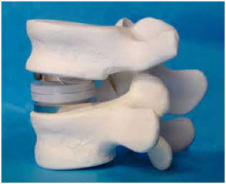Neck pain is extremely common. Some studies estimate the 80% of people experience significant neck pain at some point in their lives with an annual incidence estimated at about 20% of the population at any given time and these numbers are higher in office and computer heavy occupations. The number of people experiencing neck pain continues to grow and is likely correlated with our increased use of computers, tablets and smart phones. “Tech neck” is an epidemic of increasing neck pain as a result of our increased dependence on technology and how it affects our posture and the structures that support our neck and spine.
When we use a computer we tend to sit in a flexed forward position with our head and neck bending at a downward angle toward the computer screen. Using a tablet or smart phone results in an even more extreme flexed forward position with our head and eyes peering down at Facebook or trying to beat Angry Birds. We tend to spend hours at a time in this position at work or now in our free time and often don’t realize the duration of time spent as we become engrossed in a finishing a spreadsheet for the boss or buying the coolest new widget on Amazon or admiring our high school crush on Instagram.
This tech neck position results in increasing pressure on the intervertebral discs which cushion and support the cervical spine. The average adult head weighs 10-12 pounds. With the neck in a neutral position, head and eyes facing forward, there is minimal pressure on the spine. If we bend forward about 15 degrees, this weight on our neck increases to 27 pounds. With our neck at a 60 degree forward angle, there is 60 pounds of extra weight on our neck. An occasional increased loading on the neck in this position should cause minimal damage but persistent time spent working on a computer or smart phone leads to overuse and potential significant damage to the discs in the cervical spine.

The symptoms of tech neck start with neck pain. Initial pain is primarily muscular and soft-tissue related. When we hold our head flexed forward the muscles in the back of the neck and around our shoulder blades are constantly working to support our cervical spine. This leads to essentially an overuse muscular injury. Muscles fatigue, tighten and spasm with constant overuse. With years of pressure on the neck, further deterioration occurs with the critical supporting structures of the cervical spine such as the intervertebral discs, facet joints and vertebra. As discs in the neck degenerate, they harden and calcify. This contributes further to neck pain and can cause headaches. Excess pressure on discs can lead to disc herniations which occur when the gelatinous center of the disc, the nucleous pulposus, ruptures through the stronger lamellar coating of the disc, the annulus fibrosus. This disc material causes inflammation of the cervical nerve roots leading to pain, numbness and possibly muscle weakness in the shoulders, arms and hands. Symptoms such as these should be evaluated by a physician.
There are many steps we can take to alleviate the pain from tech neck.
- Posture: While working on a computer keep your screen at eye level. Rest your head back on a headrest and avoid flexing your body forward. It actually helps to be in a slightly reclined position if you are sitting. An even better solution may be to use a standing work station. Consider this as well when using your phone or tablet. Tablet holders can better position your device for you.
- Limit screen time: Set reminders when working on a computer to take breaks every 30 minutes. Minimize long hours in front of screens.
- Exercise: Low impact cardio exercise is good all around. Specific neck exercises can strengthen and stretch muscles in the neck and upper back to combat neck pain. Physical therapy is an excellent way to learn this.
- Seek help from a doctor: If you are having persistent neck pain or any pain or numbness in the arms please consider seeing a physician. At the Orthopedic Sports Clinic we specialize in taking care of all musculoskeletal injuries and pain.
A standard evaluation of neck pain consists of a careful history and physical examination. Imaging studies such as an x-ray and MRI can show the important structures of the cervical spine and the amount of deterioration or injury and most importantly the spinal cord function. We can do these in the clinic the same day as a visit. Most of the time, the treatment program begins with physical therapy. If pain persists, or nerve function is compromised, surgery is an option and in the right patient is very successful with 95% relief of pain. Because of recent advancements, cervical disc replacement surgery is now an option for neck pain from disc degeneration. This surgery is done as an outpatient with a quick recovery and full return to activity without limitations. Please feel free to contact us if you are experiencing neck pain as a result of “tech neck” or other causes.

Cervical Disc Replacement
